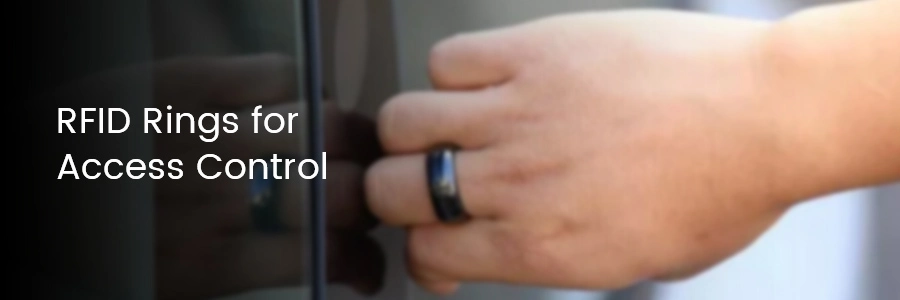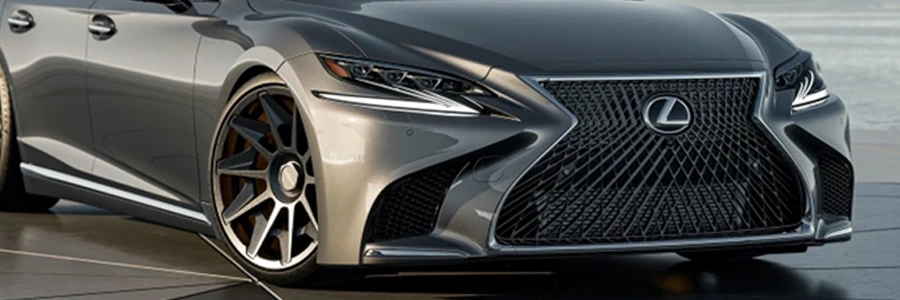RFID rings for access control are revolutionizing, merging jewelry aesthetics with contactless authentication. At the heart of this innovation lies a critical technical choice: RFID frequency. This article decodes how frequencies like 125 kHz, 13.56 MHz, and 920 MHz determine the performance of RFID rings in vehicle access systems and beyond.

An RFID system comprises:
Reader: The brain (e.g., car door module)
Antenna: Signal broadcaster (embedded in vehicle handles)
Tag: Data carrier (your RFID ring)
Unlike traditional keys, RFID rings use electromagnetic induction - a technology that demands precise frequency calibration for reliability.
Tesla's 7-meter "Walk-Up Unlock" and BMW's Digital Key Plus showcase RFID's dominance in automotive security. RFID rings excel because:
Hands-free operation: Unlock while carrying groceries
Anti-theft features: 128-bit AES encryption in HF systems
Durability: Survives -40°C to 85°C (ideal for car keys)

Range: <10 cm
Strengths:
Penetrates metal/water (perfect for key rings near car doors)
Immune to signal collision
Vehicle Use: Toyota/Lexus smart keys

Range: ~1 m
Strengths:
Supports cryptographic authentication (ISO 14443)
Compatible with smartphones
Vehicle Use: Hyundai Digital Key (phone/watch/ring pairing)
3. UHF (860-960 MHz)Range: 3-15 m
Strengths:
Long-range detection (Tesla's approach-with-unlock)
Batch reading
Limitations: Metal interference requires clever antenna design in rings
|
|
LF |
HF |
UHF |
|
Range |
10cm |
1m |
10m |
|
Metal Tolerance |
★★★★★ |
★★★ |
★ |
|
Data Rate |
1kbps |
25kbps |
640kbps |
|
Security |
Basic |
High |
Medium |
UHF Dominance (Most EVs):
Enables "passive entry" without touching the ring
Tesla Model X: 7m wake-up distance via 902-928 MHz
Hybrid Systems (Luxury Brands):
LF (134.2 kHz) for precise localization + UHF for long-range communication
Prevents relay attacks by verifying physical proximity
RFID rings combat hacking attempts via:
HF Encryption:
256-bit ECDSA in Mercedes-Benz UWB keys
Blocks 99.6% of relay attacks (SAE J2945 standard)
UHF Signal Hopping:
Frequency-Hopping Spread Spectrum (FHSS) changes channels 2,000x/sec
Thwarts jamming/replay attacks
Manufacturers must navigate:
North America: FCC Part 15 (902-928 MHz @ 4W EIRP)
Europe: ETSI EN 302 208 (865-868 MHz @ 2W ERP)
China: MIIT mandates 920-925 MHz for passive UHF
Japan: ARIB STD-T106 (952-955 MHz)
This explains why RFID rings may work differently when traveling abroad.
|
Technology |
Frequency |
Pros |
Cons |
|
RFID Ring |
13.56 MHz/920 MHz |
No battery, waterproof |
Limited range |
|
Bluetooth |
2.4 GHz |
Smartphone integration |
High power draw |
|
UWB |
6.5/8 GHz |
10cm precision |
Costly implementation |
Case Study: Apple Car Key uses NFC (HF) for initial auth + UWB for centimeter-grade positioning.
5.8 GHz DSRC:
Digital Key 3.0 standard by CCC (BMW, Apple, Google)
50ms latency for shared-access fleets
Ambient Backscatter:
Battery-free UHF rings powered by Wi-Fi/TV signals
University of Washington prototype achieves 1km range
Q: Why does my RFID ring sometimes fail in parking garages?
A: Concrete/metal structures attenuate UHF signals (>800 MHz). Try moving closer to the reader.
Q: Are RFID rings safer than smartphone NFC?
A: HF-based rings with SE chips match phone security, while UHF versions add physical possession factors.
Q: Can I copy someone's RFID rings for access control?
A: Modern systems use rolling codes - cloning a 13.56 MHz tag requires breaking AES-128 encryption.
From 125 kHz analog systems to 5.8 GHz digital keys, RFID rings leverage carefully chosen frequencies to balance security, range, and convenience. As automakers like Ford (Pat. US20230150321A1) develop multi-frequency authentication rings, this wearable tech is poised to replace traditional keys entirely.
Next-gen RFID rings won't just open your car - they'll authenticate payments, start engines, and even adjust seat positions... all through the magic of radio waves. If you also need rfid rings for access control, please contact us at info@rfidsilicone.com. rfidsilicome offers a variety of styles.
-------------------
Welcome to contact us!
RFIDSilicone is Your Best RFID & NFC Partner!
19+ years experience in RFID products (RFID wristband, RFID sticker/tag, RFID card etc).
Our own factory passed ISO9001: 2015 & ISO14001:2015. We have SGS, ROHS, REACH, FDA certificates etc.